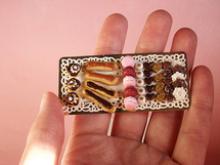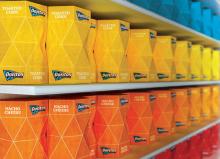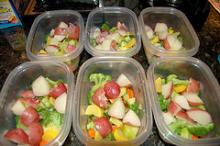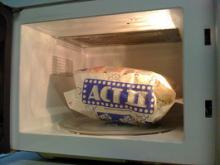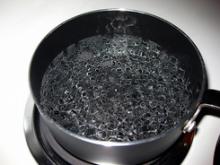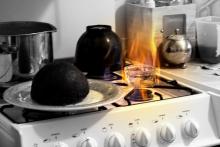Crepes: Easy to do at home
I've noticed at the local farmer's markets, watching the popular street food vendors, that crêpes are fast gaining a following of enthusiasts here in the Pacific Northwest. There's almost always a line at these informal crêperies, drawn by the aroma and the flames as crêpes are cooked to order on-the-spot.
Since crêpes are delicious, versatile, fun to eat, and guaranteed to impress your family and friends, I thought we could talk a bit about how to make your own crêpes, anytime, in your own kitchen.
Here's an easy and very flexible recipe I got from a friend:
Ingredients:
- 2 large, fresh eggs
- 1 1/2 cup milk
- 1 cup sifted all-purpose flour
- 1 tablespoon melted, unsalted butter
- 1/2 tsp salt (for savory crêpes ) OR
- 2 tsp raw sugar (for sweet crêpes)—You can also use Grand Marnier or honey or another sweetener of your choice. Experiment. It's better than half the fun of cooking!
Procedure
Beat the eggs until they become frothy Combine eggs with milk, flour, butter, and salt or sugar
Beat the batter until it seems very, very smooth, and then beat it some more. And then beat it some more after that. The batter will very likely seem too thin to your American, pancake-accustomed eyes—it's not really too thin. I promise.
If you have time, pour it into a container with a cover and let your batter sit overnight in the fridge. Trust me. All those little bubbles settle out and the result is a positively silky texture.
Lightly oil a nonstick skillet. Cooking spray is nasty. If you don't use butter, then use a nice light oil. Preheat on high
Pour a scant 1/4 cup of batter directly in the center of your hot skillet, then lift the skillet, tilt, and rotate so the batter spreads thinly and evenly in a circle. Cook until lightly browned, probably about a minute or a little less, then turn with a spatula. (You can flick the skillet to toss the crêpe and flip it in the air if you're extraordinarily coordinated and a show-off—or if you don't mind crêpes on the floor.)
The best part of crêpes, of course, is the filling. Have fun with it! Try different cheeses, eggs, meats, or herbs. For sweet crêpes, experiment with cream or ricotta cheese, creme fraiche, whipped cream, fresh fruit, or homemade compotes or preserves. Consider experimenting with citrus zest, fresh vanilla bean, and other flavors instead of the Grand Marnier for sweet crêpes.
Here's a link to Superstar Chef Eric Ripert's crêpe recipe, for crêpes Suzette. If you want to do something especially showy with your crêpes, here's a nice demonstration of crêpes Suzette:
Image Credit: Antilived

